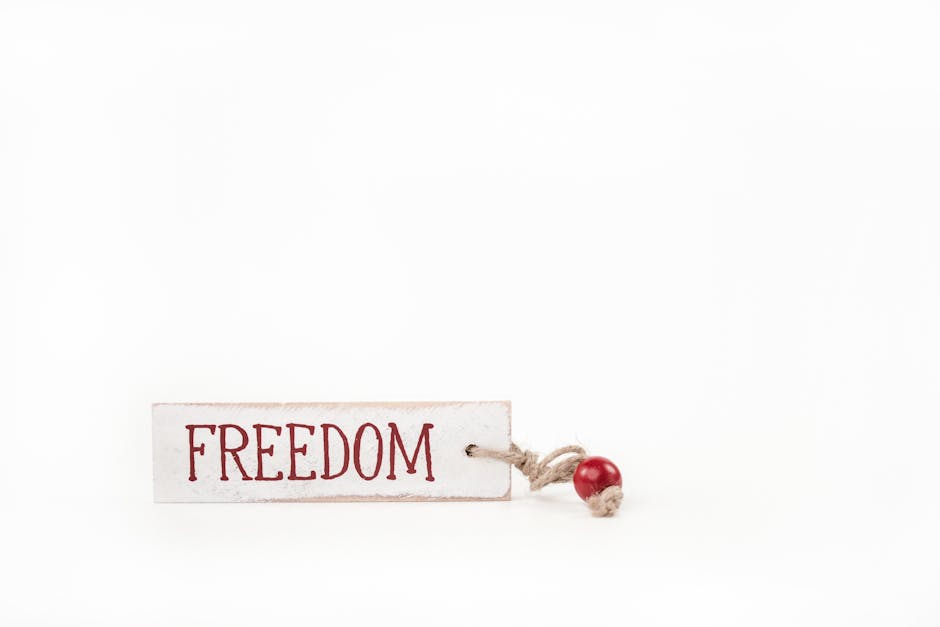The humble carrot cake, a seemingly simple dessert, boasts a surprisingly rich and complex history, far exceeding its reputation as a mere afternoon treat. While pinpointing its exact origins is challenging, evidence suggests its earliest forms emerged not in the United States, as many believe, but much earlier in Europe. Medieval cookbooks from the 10th century onward feature recipes using grated carrots in both sweet and savory dishes, showcasing the vegetable’s versatility long before the advent of refined sugar made it a staple in baking. The addition of spices like cinnamon and nutmeg, common in Middle Eastern and European cuisine, points to a gradual evolution of the recipe across continents.
The use of carrots in cakes wasn’t solely driven by culinary creativity; practicality played a significant role, especially during times of scarcity. During World War II, sugar rationing in many countries led to a surge in carrot cake’s popularity. Carrots, readily available and naturally sweet, served as an excellent sugar substitute, resulting in a delicious and economical dessert. This wartime adoption cemented the carrot cake’s place in the collective consciousness, especially in the United States and the United Kingdom, where it gained widespread recognition. Interestingly, statistics show a significant increase in carrot cake sales during periods of economic downturn, highlighting its enduring appeal as a cost-effective and comforting treat.
Beyond its practical origins, the carrot cake has acquired significant cultural significance. It’s become a staple at celebrations, from birthdays and holidays to potlucks and coffee mornings. Its vibrant orange hue symbolizes energy, warmth, and happiness, further contributing to its festive appeal. The cake’s adaptability is also noteworthy; variations abound, incorporating everything from cream cheese frosting (a particularly popular American addition) to nuts, raisins, and even pineapple. This flexibility allows for personal customization, making it a truly versatile dessert that transcends cultural boundaries. In fact, global searches for carrot cake recipe average millions annually, showcasing its enduring international popularity and widespread appeal.
This recipe aims to capture the essence of this beloved classic, offering a perfectly balanced blend of moist carrot cake and creamy frosting. We’ve taken inspiration from various historical and modern interpretations, striving to create a recipe that’s both delicious and easy to follow, allowing you to experience the rich history and cultural significance of this iconic dessert in your own kitchen. Get ready to embark on a culinary journey through time, one delicious bite at a time!
Ingredients and Measurements
This section details the ingredients required for our Best Carrot Cake recipe, along with precise measurements and helpful tips for achieving optimal results. Accuracy in measuring is crucial for baking, so please use a kitchen scale whenever possible for the most consistent outcome. Volume measurements can vary depending on how ingredients are packed.
For the Carrot Cake:
- 2 cups (250g) all-purpose flour: Using a good quality all-purpose flour ensures a tender crumb. Spoon the flour into your measuring cup and level it off with a straight edge, avoiding scooping directly from the bag, which can lead to packed flour and a denser cake.
- 2 teaspoons baking soda: Baking soda is essential for leavening. Ensure it’s fresh; older baking soda loses its potency. Check the expiration date!
- 1 teaspoon ground cinnamon: This classic spice provides warmth and complements the carrots beautifully. Use freshly ground cinnamon for the best flavor.
- 1/2 teaspoon ground nutmeg: A touch of nutmeg adds depth and complexity to the spice profile. Don’t overdo it; a little goes a long way.
- 1/4 teaspoon ground cloves: A tiny amount of cloves adds a subtle warmth. Optional, but recommended for a more traditional flavor.
- 1/2 teaspoon ground ginger: Ginger offers a pleasant zing. Freshly grated ginger can also be used, but start with less as it has a stronger flavor.
- 1/2 teaspoon salt: Salt enhances the sweetness and balances the other flavors. Don’t skip this crucial ingredient!
- 1 1/2 cups (300g) granulated sugar: This provides the sweetness. You can adjust this slightly to your preference, but be mindful that reducing the sugar significantly might affect the cake’s texture and rise.
- 3/4 cup (180ml) vegetable oil: Oil keeps the cake moist. Use a neutral-flavored oil like canola or vegetable oil. Avoid using olive oil as its strong flavor can overpower the cake.
- 4 large eggs: Eggs bind the ingredients and add richness. Bring them to room temperature for optimal emulsification.
- 1 teaspoon vanilla extract: Vanilla enhances the overall flavor. Use pure vanilla extract for the best taste.
- 2 cups (200g) grated carrots: Use fresh, finely grated carrots for the best texture and flavor. Avoid using pre-shredded carrots from a bag as they often contain preservatives that can affect the cake’s texture.
- 1 cup (120g) chopped walnuts or pecans (optional): Toasted nuts add a delightful crunch. Toasting the nuts before adding them enhances their flavor.
For the Cream Cheese Frosting:
- 8 ounces (225g) cream cheese, softened: Softened cream cheese is crucial for smooth and creamy frosting. Allow it to sit at room temperature for at least 30 minutes before using.
- 1/2 cup (115g) unsalted butter, softened: Softened butter ensures a smooth consistency. Use unsalted butter to control the salt level in the frosting.
- 3 cups (360g) powdered sugar: Powdered sugar provides sweetness and a light texture. Sift the powdered sugar before adding it to remove any lumps.
- 1 teaspoon vanilla extract: Vanilla complements the cream cheese and adds depth of flavor.
Note: All measurements are approximate. Adjust to your preference, but keep in mind that significant alterations may impact the final result. Enjoy baking!
Equipment List
Baking a truly exceptional carrot cake requires not only the finest ingredients but also the right tools. This equipment list details everything you’ll need, from essential baking pans to helpful gadgets that will elevate your baking experience. Investing in quality equipment will ensure consistent results and make the entire process more enjoyable.
1. 9×13 inch Baking Pan: This is the standard size for a classic carrot cake, providing ample surface area for even baking. Look for a pan with a dark, non-stick coating for optimal heat distribution and easy release. Avoid using a lighter-colored pan, as it may result in uneven browning. A dark-colored pan absorbs heat more efficiently, leading to a more evenly baked and moist cake.
2. Two 9-inch Round Cake Pans (Optional): For a taller, more elegant carrot cake, two 9-inch round cake pans are a fantastic alternative. This option allows for layering and frosting, creating a visually stunning dessert. Ensure both pans are the same size and depth for consistent baking.
3. Mixing Bowls (3): You’ll need at least three mixing bowls of varying sizes. One large bowl (at least 5-quart capacity) is essential for creaming together the butter and sugar. A medium-sized bowl is ideal for whisking together the dry ingredients, and a small bowl can be used for preparing the spices or combining wet ingredients.
4. Measuring Cups and Spoons: Accurate measurements are crucial in baking. Invest in a good set of measuring cups and spoons, preferably made of stainless steel or durable plastic. Use dry measuring cups for dry ingredients (flour, sugar, spices) and liquid measuring cups for wet ingredients (oil, milk, eggs). Always level off dry ingredients with a straight edge to ensure accuracy.
5. Electric Mixer (Handheld or Stand): An electric mixer, either handheld or stand, is a must-have for this recipe. The creaming process, which involves beating the butter and sugar together until light and fluffy, requires a significant amount of power. A stand mixer is ideal for larger batches and less demanding on your arm, but a powerful handheld mixer will also work well. Make sure your mixer is capable of handling heavier batters.
6. Rubber Spatula or Wooden Spoon: A rubber spatula or wooden spoon is essential for scraping down the sides of the bowl and ensuring all ingredients are thoroughly combined. This is especially important when incorporating the dry ingredients into the wet ingredients. A flexible spatula is excellent for getting into the corners of the bowl.
7. Parchment Paper: Lining your baking pan with parchment paper prevents sticking and makes removing the cake much easier. Cut a piece of parchment paper slightly larger than the bottom of your pan and place it in before adding the batter. This is especially helpful with round pans.
8. Wire Rack: A wire rack allows the cake to cool completely and evenly, preventing condensation and ensuring a crisp exterior. Let the cake cool in the pan for about 10-15 minutes before transferring it to the wire rack. Cooling completely is crucial before frosting.
9. Offset Spatula or Butter Knife: For spreading the frosting evenly and creating a smooth finish, an offset spatula or a long, thin butter knife is highly recommended. These tools allow for precise frosting application.
10. Cake Decorating Tools (Optional): If you want to decorate your carrot cake further, consider adding cake decorating tools such as piping bags, frosting tips, and sprinkles to personalize your masterpiece.
Cake Preparation (Wet Ingredients, Dry Ingredients, Combining)
This section details the preparation of the wet and dry ingredients for our Best Carrot Cake recipe, followed by the crucial combining step for a perfectly moist and textured cake. Accurate measurements are key to success, so please use a kitchen scale for the most precise results.
Preparing the Wet Ingredients: Begin by gathering your wet ingredients: 200g vegetable oil (a neutral-flavored oil like canola or sunflower is recommended), 3 large eggs, 300g granulated sugar, and 200g of unsweetened applesauce. Ensure all ingredients are at room temperature. This will help them emulsify properly and result in a smoother batter. Crack the eggs into a large bowl, ensuring no shell fragments fall in. Add the sugar and whisk vigorously using a hand mixer or stand mixer until the mixture is pale and slightly thickened, about 2-3 minutes. This step incorporates air, leading to a lighter cake.
Next, gradually add the oil to the egg and sugar mixture, whisking continuously on low speed. This prevents the oil from separating. Once the oil is fully incorporated, slowly add the applesauce, mixing until just combined. Avoid overmixing at this stage, as it can lead to a tough cake. The batter should be smooth and well blended but not overly aerated.
Preparing the Dry Ingredients: In a separate large bowl, whisk together your dry ingredients: 300g all-purpose flour, 2 teaspoons baking soda, 2 teaspoons ground cinnamon, 1 teaspoon ground nutmeg, ½ teaspoon ground cloves, and ½ teaspoon ground ginger. Sift the flour to remove any lumps and ensure even distribution of the baking powder. This is crucial for a tender crumb. Thoroughly combine all the dry ingredients to avoid pockets of spices in the final cake.
Combining Wet and Dry Ingredients: Now comes the delicate part – combining the wet and dry ingredients. It’s vital to do this gently and gradually to prevent overmixing. Add about one-third of the dry ingredients to the wet ingredients and mix on low speed until just combined. Then, add another third, mix until just combined, and finally, add the remaining dry ingredients. Mix until no visible dry ingredients remain. Overmixing will develop the gluten in the flour, resulting in a tough and dense cake. Mix only until the ingredients are just incorporated. The batter should be slightly lumpy.
Adding the Carrots and Nuts (if using): Gently fold in 300g of grated carrots and 100g of chopped walnuts or pecans (optional). Use a spatula to fold the ingredients in a gentle up-and-down motion. Avoid vigorous stirring, as this will deflate the batter. Ensure the carrots and nuts are evenly distributed throughout the batter.
Once everything is thoroughly combined, your batter is ready to be poured into a prepared baking pan. Remember, following these steps carefully will help you achieve the perfect texture and moistness for your Best Carrot Cake!
Frosting Preparation
The creamy, tangy frosting is what truly elevates a carrot cake from good to unforgettable. This recipe focuses on a classic cream cheese frosting, perfectly balanced to complement the cake’s warm spices. We’ll be making enough frosting to generously cover a 9×13 inch cake, ensuring every slice is delightfully frosted.
Ingredients:
- 8 ounces (227g) cream cheese, softened to room temperature. This is crucial! Cold cream cheese will be difficult to beat smoothly and will result in a lumpy frosting. Leave it out at room temperature for at least an hour before starting.
- 1/2 cup (113g) unsalted butter, softened to room temperature. Similar to the cream cheese, softened butter is key for a smooth, creamy texture.
- 3 cups (360g) powdered sugar, sifted. Sifting removes lumps and ensures a smoother final product. Don’t skip this step!
- 1 teaspoon pure vanilla extract. Use a high-quality vanilla extract for the best flavor.
- Pinch of salt. This enhances the sweetness and balances the flavors.
- 2-3 tablespoons milk or cream (optional). This is for adjusting consistency. Start with 2 tablespoons and add more if needed to reach your desired spreadability.
Instructions:
1. Beat the cream cheese and butter: In a large bowl, using an electric mixer (a stand mixer is ideal, but a hand mixer works well too), beat the softened cream cheese and butter together on medium speed until light and fluffy. This should take about 2-3 minutes. Scrape down the sides of the bowl as needed.
2. Gradually add the powdered sugar: Gradually add the sifted powdered sugar, one cup at a time, beating on low speed after each addition until fully incorporated. Beating on low speed prevents a sugar cloud from forming. Once all the sugar is added, increase the speed to medium and beat for another 2-3 minutes until the frosting is light, fluffy, and completely smooth.
3. Stir in the flavorings: Add the vanilla extract and salt, and beat on low speed for 30 seconds to combine. If the frosting is too thick, gradually add milk or cream, one tablespoon at a time, until you reach the desired consistency. Start with less and add more as needed; it’s easier to add than to take away.
4. Frost the cake: Once the frosting is ready, frost your cooled carrot cake. You can use a spatula or piping bag, depending on your desired look. For a classic look, use an offset spatula to create smooth, even layers. Let the frosted cake sit at room temperature for at least 30 minutes before serving to allow the frosting to set slightly.
Tips for Success:
- Room temperature ingredients are essential for a smooth and creamy frosting.
- Don’t overbeat the frosting, as this can incorporate too much air and make it less stable.
- Adjust the sweetness to your preference by adding more or less powdered sugar.
- For a richer flavor, use full-fat cream cheese and butter.
- Get creative! Add a pinch of cinnamon or nutmeg to the frosting for a spiced twist.
Baking Instructions
Preheat your oven to 350°F (175°C). This is crucial for even baking. Using a thermometer to check your oven’s accuracy is highly recommended, as ovens can vary in temperature. An inaccurate oven can lead to underbaked or overbaked cakes.
Grease and flour a 9×13 inch baking pan. This prevents sticking and ensures easy removal of your delicious carrot cake. You can also line the bottom of the pan with parchment paper for extra insurance. Make sure to grease the sides of the pan as well. A light coating of non-stick cooking spray followed by a dusting of flour works perfectly.
Pour the prepared batter into the prepared pan and spread it evenly. A spatula or offset spatula is ideal for this task. Ensure the batter reaches all corners of the pan for consistent baking.
Bake for 30-35 minutes, or until a wooden skewer inserted into the center comes out clean. This is the most important indicator of doneness. Do not open the oven door frequently during baking, as this can cause the cake to collapse. Start checking for doneness around the 30-minute mark.
Important Note: Baking times can vary depending on your oven and the altitude. If you notice the edges browning too quickly, you can tent the cake loosely with aluminum foil to prevent further browning. However, be careful not to cover the entire cake, as this could trap steam and result in a soggy cake.
Once the skewer comes out clean, the cake is ready. It should be springy to the touch and have a golden-brown top. If a wooden skewer comes out with moist crumbs attached, bake for another 5-7 minutes and test again. Overbaking will result in a dry, crumbly cake.
Allow the cake to cool in the pan for at least 10-15 minutes before inverting it onto a wire rack to cool completely. This cooling time is essential to prevent the cake from breaking apart. Letting the cake cool completely in the pan before inverting it will help to maintain its shape and prevent it from crumbling.
Once the cake is completely cool, you can frost it with your favorite cream cheese frosting. Do not frost the cake while it’s still warm, as the frosting will melt. A completely cooled cake will ensure that your frosting sets properly and holds its shape beautifully.
Troubleshooting Tip: If your cake is underbaked in the center but the edges are overdone, try lowering the oven temperature by 25°F (15°C) for the next attempt. Also, consider using a darker colored pan, which can help bake the cake more evenly.
Enjoy your perfectly baked, moist, and delicious carrot cake!
Cooling and Setting
Cooling your carrot cake properly is crucial for achieving the perfect texture and preventing a soggy bottom. Improper cooling can lead to a dense, heavy cake, so pay close attention to this step. We’ll guide you through the process to ensure your cake is a masterpiece.
Once your carrot cake is finished baking and the toothpick test indicates it’s done (inserted into the center, it should come out clean or with just a few moist crumbs), immediately remove it from the oven. Do not leave it in the hot oven to cool, as this can lead to uneven cooking and a dry top layer.
Let the cake cool in the pan for 10-15 minutes on a wire rack. This initial cooling period allows the cake to firm up slightly before handling. The wire rack is essential; it provides air circulation around the pan, preventing steam build-up and promoting even cooling.
After the initial 10-15 minutes, carefully run a thin, blunt knife or offset spatula around the edges of the cake to loosen it from the pan. This prevents sticking and makes for a cleaner release. Use caution; the cake will still be warm and delicate.
Invert the cake onto the wire rack. This is the most important part of the cooling process. Inverting the cake allows the bottom, which is often the densest part, to cool completely and evenly. If you leave it in the pan, the residual heat trapped underneath will lead to a soggy bottom. Ensure the wire rack is sturdy enough to support the weight of the cake.
Allow the cake to cool completely on the wire rack, which will take approximately 1-2 hours, depending on the size of your cake and the ambient temperature. Resist the urge to rush this process. A completely cooled cake is easier to frost and slice neatly.
While the cake is cooling, prepare your frosting. This allows the frosting to come to room temperature, improving its spreadability. Don’t frost a warm cake; the frosting will melt and slide off. A completely cooled cake provides a stable base for the frosting to adhere to.
Once the cake is completely cool, you can gently frost it. If you notice any crumbs clinging to the surface, use a pastry brush to lightly dust them off before frosting for a smooth finish. Gentle handling is key throughout the cooling and frosting process to avoid damaging the delicate cake structure.
Finally, after frosting, allow the cake to sit for another 30 minutes to allow the frosting to set slightly before slicing and serving. This will prevent the frosting from smearing or crumbling when you cut into the delicious carrot cake.
Following these steps ensures your carrot cake not only tastes amazing but also looks beautiful and holds its shape perfectly. Enjoy!
Best Carrot Cake Recipe: Recommendations
This Best Carrot Cake recipe is designed to be moist, flavorful, and perfectly spiced. To achieve optimal results, follow these recommendations carefully. Ensure all ingredients are at room temperature before beginning to guarantee proper mixing and a smooth batter. Don’t overmix the batter; this can lead to a tough cake. Mix until just combined.
For the best flavor, use fresh, high-quality ingredients. The carrots should be finely grated for even distribution throughout the cake. If using canned pineapple, drain it well to avoid an overly moist cake. Consider using a combination of granulated and brown sugar for a deeper, more complex sweetness. Toasting the nuts before adding them to the batter enhances their flavor and adds a delightful crunch.
Baking time may vary depending on your oven. Start checking for doneness around the recommended time, using a toothpick inserted into the center. If it comes out clean, the cake is ready. Allow the cake to cool completely in the pan before frosting to prevent the frosting from melting. Let the cake cool completely on a wire rack before frosting. This prevents the frosting from sliding off and ensures that the cake remains moist.
Serving Suggestions: This carrot cake is delicious on its own, but it can be elevated with a variety of accompaniments. Serve it with a scoop of vanilla ice cream, a dollop of whipped cream, or a drizzle of cream cheese frosting. A sprinkle of chopped pecans or walnuts adds extra texture and flavor. For a more sophisticated presentation, consider serving individual slices on dessert plates, garnished with a sprig of fresh mint or a dusting of powdered sugar.
Storage: Store leftover carrot cake in an airtight container at room temperature for up to 3 days. For longer storage, wrap the cake tightly in plastic wrap and then foil, and refrigerate for up to a week. The cake can also be frozen for up to 3 months. To freeze, wrap the cake tightly in plastic wrap and then foil, and place it in a freezer-safe bag. Thaw the cake overnight in the refrigerator before serving.
Complementary Dishes: This carrot cake pairs beautifully with a variety of beverages and dishes. It complements coffee, tea, or a light dessert wine perfectly. For a complete meal, consider serving it alongside a light salad with a vinaigrette dressing or a fruit compote. The contrasting flavors and textures create a delightful balance.
Nutritional Information (per serving, approximate): The exact nutritional content will vary depending on the specific ingredients used and serving size. However, a typical serving of carrot cake (approximately 1/12th of a 9-inch cake) might contain approximately 350-400 calories, 15-20g of fat, 40-50g of carbohydrates, and 4-6g of protein. This is an estimate and should not be considered precise without precise ingredient measurements and a full nutritional analysis.
Important Note: These are general recommendations. Always refer to your specific recipe instructions for the most accurate baking times and serving suggestions. Enjoy your delicious carrot cake!





